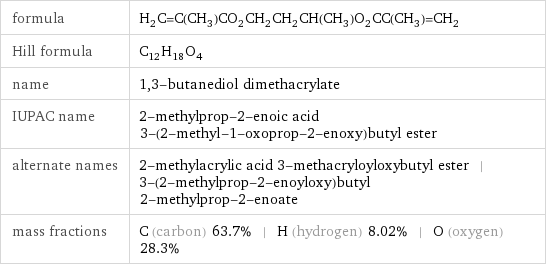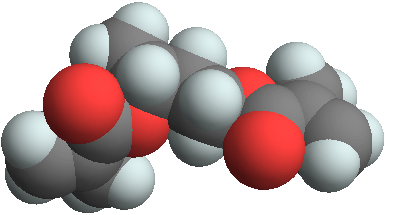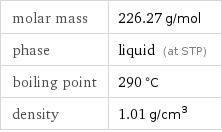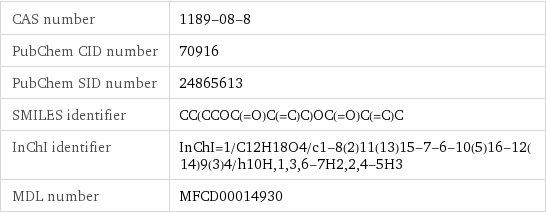Input interpretation

1, 3-butanediol dimethacrylate
Chemical names and formulas

formula | H_2C=C(CH_3)CO_2CH_2CH_2CH(CH_3)O_2CC(CH_3)=CH_2 Hill formula | C_12H_18O_4 name | 1, 3-butanediol dimethacrylate IUPAC name | 2-methylprop-2-enoic acid 3-(2-methyl-1-oxoprop-2-enoxy)butyl ester alternate names | 2-methylacrylic acid 3-methacryloyloxybutyl ester | 3-(2-methylprop-2-enoyloxy)butyl 2-methylprop-2-enoate mass fractions | C (carbon) 63.7% | H (hydrogen) 8.02% | O (oxygen) 28.3%
Lewis structure

Draw the Lewis structure of 1, 3-butanediol dimethacrylate. Start by drawing the overall structure of the molecule, ignoring potential double and triple bonds: Count the total valence electrons of the carbon (n_C, val = 4), hydrogen (n_H, val = 1), and oxygen (n_O, val = 6) atoms: 12 n_C, val + 18 n_H, val + 4 n_O, val = 90 Calculate the number of electrons needed to completely fill the valence shells for carbon (n_C, full = 8), hydrogen (n_H, full = 2), and oxygen (n_O, full = 8): 12 n_C, full + 18 n_H, full + 4 n_O, full = 164 Subtracting these two numbers shows that 164 - 90 = 74 bonding electrons are needed. Each bond has two electrons, so in addition to the 33 bonds already present in the diagram add 4 bonds. To minimize formal charge oxygen wants 2 bonds and carbon wants 4 bonds. Identify the atoms that want additional bonds and the number of electrons remaining on each atom: Fill in the 4 bonds by pairing electrons between adjacent highlighted atoms: Answer: | |
3D structure

3D structure
Basic properties

molar mass | 226.27 g/mol phase | liquid (at STP) boiling point | 290 °C density | 1.01 g/cm^3
Units

Liquid properties (at STP)

density | 1.01 g/cm^3 refractive index | 1.452
Units

Chemical identifiers

CAS number | 1189-08-8 PubChem CID number | 70916 PubChem SID number | 24865613 SMILES identifier | CC(CCOC(=O)C(=C)C)OC(=O)C(=C)C InChI identifier | InChI=1/C12H18O4/c1-8(2)11(13)15-7-6-10(5)16-12(14)9(3)4/h10H, 1, 3, 6-7H2, 2, 4-5H3 MDL number | MFCD00014930